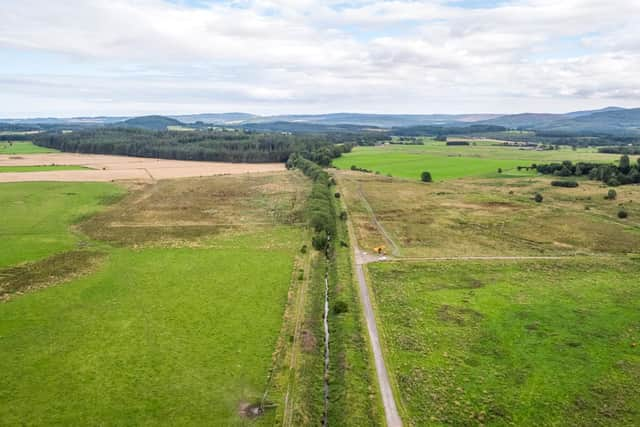Twist of nature: bends - and salmon - to be returned to Deeside river
Beltie Burn, near Torphins, was first engineered in the mid-18th century for agricultural improvements and later to make way for the Deeside Railway line.
Today the waterway is much wider, deeper and straighter than its natural course.
Advertisement
Hide AdAdvertisement
Hide AdThe new Easter Beltie Restoration Project, the only one of its kind in the north-east of Scotland, will create a 2km stretch of river corridor and ten hectares of floodplain rich in habitats where wildlife can thrive.


Environmental benefits
It’s hoped the work, which includes planting native trees, will help boost declining wild salmon populations.
The initiative, managed by the Dee Catchment Partnership and with strong support from the landowner, is a collaboration that brings together the Dee District Salmon Fishery Board, River Dee Trust and James Hutton Institute.
Partnership manager Dr Susan Cooksley, who heads up the project, said: “Originally a twisting channel flowing through low-lying wetlands, the Beltie Burn’s middle reaches near the old Deeside line have been heavily straightened, embanked, widened and deepened.
“This has degraded habitats for fish, plants and invertebrates – the current channel contains far too much silt and sand, offering no salmon spawning habitat.
“The deepening means that the burn is completely disconnected from its floodplain, reducing available wetland habitat and the capacity of the whole area to store floodwaters.”
At the heart of the site will be an unconstrained meandering channel, enriched by riverside native tree planting, with woodland and open wet ground in the connected floodplain.
Edwin Third, river operations manager for Dee District Salmon Fishery Board, added: “By restoring this break in the continuity of the river system the whole catchment will benefit.
Advertisement
Hide AdAdvertisement
Hide Ad“These wetland habitats typically create around 150 times more food for fish and other animals than straightened channels can provide.
“So we really hope to see the return of spawning fish, as part of a thriving natural ecosystem.”
Work on the project, which has government backing from NatureScot’s Biodiversity Challenge Fund, Aberdeenshire Council, Scottish Forestry and the Scottish Environment Protection Agency, is set to begin this month.
A message from the Editor:
Thank you for reading this story on our website. While I have your attention, I also have an important request to make of you.
The dramatic events of 2020 are having a major impact on many of our advertisers – and consequently the revenue we receive. We are now more reliant than ever on you taking out a digital subscription to support our journalism.
Subscribe to scotsman.com and enjoy unlimited access to Scottish news and information online and on our app. Visit https://www.scotsman.com/subscriptions now to sign up.
By supporting us, we are able to support you in providing trusted, fact-checked content for this website.
Joy Yates
Editorial Director
Comments
Want to join the conversation? Please or to comment on this article.